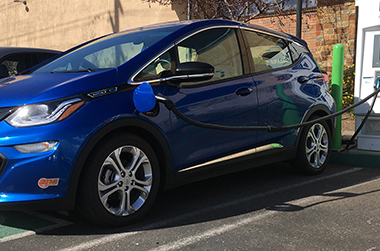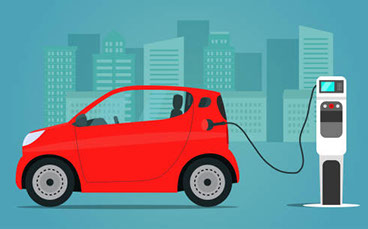MENU


Vehicle Electrification
 You're waiting in a drive-thru, or sitting in your running vehicle in a mall parking lot or in line with a hundred other vehicles during a school dismissal period on a hot day with the A/C going. Your vehicle is costing you money in fuel use and engine wear, wasting energy, emitting CO2 into the atmosphere and worst of all, polluting the air we breathe. SOMEDAY IT WON'T BE THIS WAY.
You're waiting in a drive-thru, or sitting in your running vehicle in a mall parking lot or in line with a hundred other vehicles during a school dismissal period on a hot day with the A/C going. Your vehicle is costing you money in fuel use and engine wear, wasting energy, emitting CO2 into the atmosphere and worst of all, polluting the air we breathe. SOMEDAY IT WON'T BE THIS WAY.
The State of California—California Air Resources Board, air districts, and the legislature—have unfortunately failed to lead on educating Californians on the behavioral aspect of idling and on regulating the idling of the state's 26 million passenger vehicles. This means that largely unnecessary idling will continue virtually unabated for the next ten to fifteen years.

But where California is excelling in transportation GHG emissions reductions and improved air quality is in its push to advance the technology of transportation: the replacement of internal combustion engine (ICE) vehicles by alternative fuel vehicles. Vehicle electrification is recognized as the clear leader in the goal to eventually eliminate gas vehicles from our roads.
Vehicle electrification is an evolving technology that began in mass production form with hybridization at the end of the last century. On the way to pure forms of electrification, these transitional steps have included milder, lower-cost stop-start systems and more robust plug-in hybrids (PHEV). A much smaller segment of the alternative fuel market includes hydrogen fuel cell vehicles.
While electrification of the vehicle fleet will eventually include all types and classes of vehicles by the mid 21st century, for now most offerings are passenger cars. Municipal and school buses are making inroads to electrification. Lagging behind and still in the developmental stage are trucks, ranging from light-duty pickups to heavy-duty semis.
Despite California's massive efforts to move vehicle electrification forward, since 2017 the U.S. federal government has rolled back air pollution and emissions regulations including fuel economy and greenhouse gas standards for passenger cars and light trucks, and revoked California’s power to set stricter tailpipe emissions standards.
EVs: Are They for
Everyone?
Electric passenger vehicles, while offering an increasing number of models for 2020-2021, are still not for everyone, but are suiting the needs of more and more drivers, no matter their income. Limitations are mainly due to drivers' commuting distance. The miles an EV can travel between recharging (range) is increasing every year. But currently a range of 200 miles or more is offered only on more expensive models. But the cost of a new EV to purchase or lease can be surprisingly affordable for middle-income drivers.
The website Electric for All is an excellent guide on PHEVs and EVs.
Just plug in your zipcode for a:
• complete comparison of makes and models, and their cost and range
• listing of incentives/rebates ranging from the EV federal tax credit to the State of California's Clean Vehicle Rebate Program (CVRP) and to the state's utilities and various other incentives, discounts and perks
• listing of all dealers in the area selling EVs
• listing of EV charging and hydrogen fueling stations
• EV PERFORMANCE: EVs ride and handle quite similarly to their ICE counterparts. But when it comes to acceleration, EVs are no slouches due to their built-in torque and one-speed gearing that offers quick off the line performance.

USED EVs: these vehicles are usually low to mid mileage vehicles from model years 2011 and newer. While they typically only offer a range of 75-100 miles, they are very reasonably priced due to significant depreciation, ranging from as little as $4,000 for a 2011-2012 model to $7,000-$12,000 for a 2014-2016 model. Used EVs have typically one-quarter of the cost and maintenance (no gas, no oil changes, longer lasting brakes, etc.) associated with gas vehicles. Most auto manufacturers warrant the electric vehicle battery (aka traction battery) for eight years/100,000 miles. These batteries typically last much longer.
EV Car Sharing in California
Car sharing offers opportunities to drive vehicles locally without purchasing or leasing.
Known EV and PHEV car sharing opportunities in California:
• Moving California: car sharing and clean mobility options incentive programs in disadvantaged communities
• BlueLA: a 100% electric car sharing service throughout the City of Los Angeles

• Gig Car Share of Sacramento: the nation's largest all-electric car-share fleet (Gig Car Share also offers hybrid car sharing in the Bay Area)
Other EV Information Sources
In addition to the Electric for All guide...
• Plug In America has a complete national listing of EV Clubs by location and by vehicle model. California lists more than 25 clubs.
• Electric Car Association: A Network of Vehicle Enthusiasts
• InsideEVs: from their About page: "...standing as the largest Internet property comprehensively covering electric vehicle news, as well as being the flagship property in the EV Network group of websites that are dedicated to the mass adoption of electric vehicles."
• U.S. DOE Alternative Fuels Data Center: Electric Vehicle Research and Development
• Union of Concerned Scientists: Are Electric Vehicles Really Better for the Climate? Yes. Here’s Why
• Argonne National Laboratory (div. of U.S. DOE): (EV) Lithium-Ion Battery Second Life
• California Air Resources Board - DriveClean: Electric Car Charging Overview
• Green Biz: 8 electric truck and van companies to watch in 2020
• AutoWeek: Check Out All the Electric Pickup Trucks Coming down the Pike